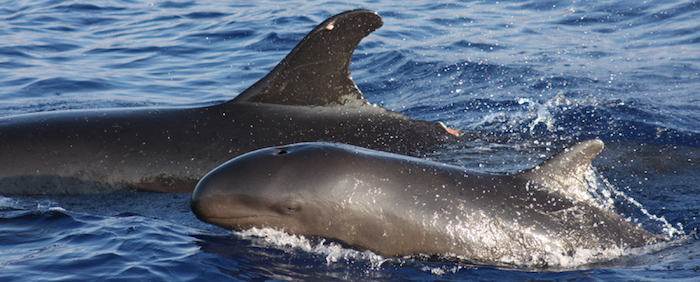Daily Business Report/Dec. 27, 2016
The new Barons Market in North Park is no longer a rendering (above), it’s real and will hold a grand opening on Thursday.
Gourmet Grocer Barons
Market Opens on Thursday
A fourthBarons Market opens Thursday in San Diego County when the gourmet grocery with an olive oil and vinegar tasting bar comes to North Park.
Barons managers will join District 3 Councilman Chris Ward and others for a ribbon cutting at 7:45 a.m. at the former Fresh & Easy outlet at 3231 E. University Ave.
“The market’s selection of all-natural food, craft beer and locally grown produce seamlessly aligns with the values of the community,” said a Barons statement, which quoted Barons Vice President of Marketing Rachel Shemirani as saying: “This location feels like coming home.”
Based in Point Loma, where the chain has a store, Barons also has locations in Alpine and Rancho Bernardo — among seven in Southern California.
The store will unveil three murals by five local artists — two indoors and one outdoors.
The North Park store also features a hot soup bar, salad bar and antipasto bar — along with a section boasting more than 400 microbrews. Store hours are 8 a.m. to 9 p.m.
Gourmet Retailer noted the olive oil and vinegar bars at its first six locations.
“Ten exotic olive oils and 14 vinegars fill shiny silver vats at each store’s tasting station accompanied by bread for dipping,” the trade journal said in June. “Customers can expect to find exceptional flavors, including citrus habanero olive oil and honey ginger white balsamic vinegar along with classic balsamic and high-quality extra virgin olive oil. When a shopper discovers his favorite, 12-ounce bottles are ready to take home for $9.99.”
_________________________

Researchers Capture Video of False
Killer Whale’s Encounter with Longline
A team of researchers and fishermen has directly observed for the first time how Hawaiian false killer whales remove fish from longline fishing gear.
The team, coordinated by Scripps Institution of Oceanography scientist Aaron Thode, used video and audio recordings to observe false killer whales removing fish from a longline fishing hook, a behavior known as depredation. They gained new insight into a behavior that has caused false killer whales to entangle with fishing gear at rates deemed unsustainable by the U.S. National Marine Fisheries Service.
False killer whales dine on popular game fish like yellowfin tuna and mahi-mahi. Their foraging efforts take them to the same open-ocean regions where commercial fishermen set 30–60 kilometer (19–37 mile)-long fishing lines to catch the same fish. This competition for fish has led false killer whales, actually a member of the dolphin family, to occasionally end up as an unintended catch of the fishing operations.
To observe false killer whales removing fish from hooks, the Alaskan and Hawaiian research team deployed an underwater camera, sound recorder, and vibration detector on long-line fishing gear deployed by fishing vessels off Hawaii. The researchers were interested in learning more about the animals’ behavior, such as what attracts them to the gear, whether they make sounds as they approach, and if they removed bait or the targeted species from the hook.
“This study addresses some important questions about the nature of this depredation, and whether underwater sound can be used to study or possibly alleviate the issue,” said Thode, a researcher with the Scripps Marine Physical Laboratory and lead author of the paper recently published in the Journal of the Acoustical Society of Ameria.
During the 30-second encounter captured on video, the scientists found that the false killer whale made distinct clicks and whistles as it approached the longlines and took baitfish off the hook. Vibrations on the fishing line when the animal removed three fish also helped the researchers estimate how far away the animal was from the recorder to calculate how loud the animal’s sounds were.
_________________________
TSRI Study: Protein Monitors Lung
Volume and Regulates Breathing
A protein originally discovered at The Scripps Research Institute (TSRI) appears to be involved in how the body controls breathing, according to a new study led by scientists at TSRI and Harvard Medical School. The study, published in Nature, shows how the Piezo2 protein, previously shown to be the principal sensor of touch and proprioception, also plays a critical role in sensing lung expansion.
“The discoveries here could provide important clues on how to treat patients with respiratory disorders,” said senior author Ardem Patapoutian, a professor at TSRI and a Howard Hughes Medical Institute investigator.
_________________________
Research Identifies Molecular Basis
For Common Congenital Brain Defect
Scientists at Sanford Burnham Prebys Medical Discovery Institute have discovered a molecular cause of hydrocephalus, a common, potentially life-threatening birth defect in which the head is enlarged due to excess fluid surrounding the brain. Because the same molecule is also implicated in Down’s syndrome, the finding, published today in the Journal of Neuroscience, may explain the ten-fold increased risk of hydrocephalus in infants born with Down’s.
_________________________
San Diego Home Prices Rose
0.2 % in October, 5.9% for Year
Home prices in San Diego rose two-tenths of a percent in October as real estate prices nationally reached a new high, according to an influential report released Tuesday.
The widely-followed Cae-Shiller Index showed the increase in the San Diego metropolitan area matched the national average in October, but was a littler higher over past 12 months — 5.9 percent versus 5.6 percent nationwide.
While local prices are still growing strongly, San Diego no longer ranks near the top. Seattle, Portland, and Denver reported the highest year-over-year gains, with increases of 8 percent to 10 percent or more.


